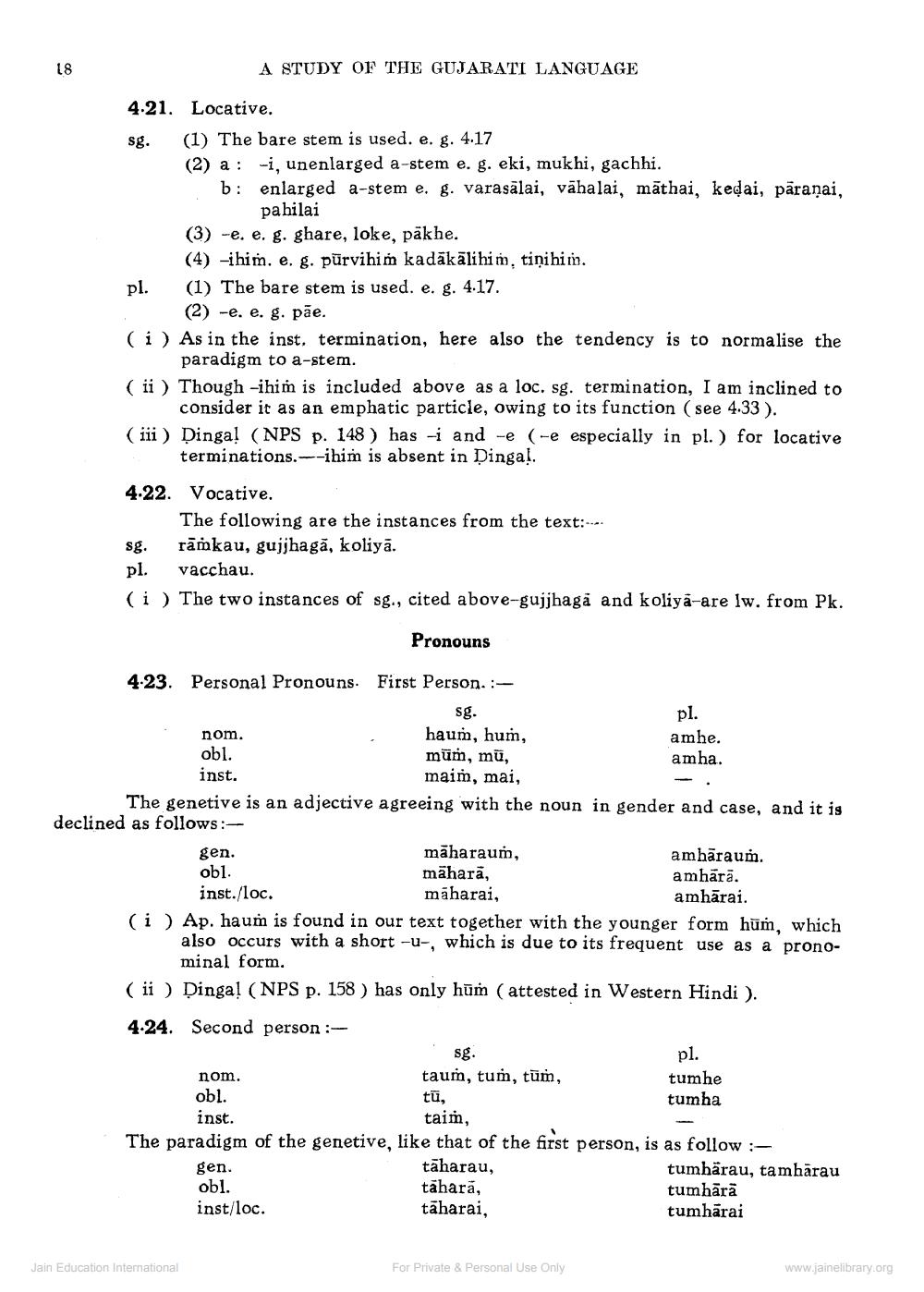________________
A STUDY OF THE GUJARATI LANGUAGE
4.21. Locative. sg. (1) The bare stem is used. e. g. 4.17
(2) a : -i, unenlarged a-stem e. g. eki, mukhi, gachhi. b: enlarged a-stem e. g. varasālai, vāhalai, māthai, kedai, pāranai,
pahilai (3) -e. e. g. ghare, loke, pākhe.
(4) -ihim. e. g. pūrvihin kadäkālihim, tiņihim. pl. (1) The bare stem is used. e. g. 4.17.
(2) -e. e. g. pāe. ( i ) As in the inst. termination, here also the tendency is to normalise the
paradigm to a-stem. (ii) Though -ihim is included above as a loc. sg. termination, I am inclined to
consider it as an emphatic particle, owing to its function (see 4.33 ). (iii) Dinga! (NPS p. 148 ) has -i and -e (-e especially in pl.) for locative
terminations.--ihim is absent in Dingal. 4.22. Vocative.
The following are the instances from the text:-.. sg. rāmkau, gujjhagā, koliyā. pl. vacchau. (i) The two instances of sg., cited above-gujjhaga and koliya-are lw. from Pk.
Pronouns
4.23. Personal Pronouns. First Person:
sg.
pl. nom. haum, hum,
amhe. obl. mum, mu,
amha. inst.
maim, mai, The genetive is an adjective agreeing with the noun in gender and case, and it is declined as follows: gen. māharaum,
amhāraum. obl. māhara,
a mhārā. inst./loc. māharai,
amhārai. (i) Ap. haum is found in our text together with the younger form hüm, which
also occurs with a short -u-, which is due to its frequent use as a prono
minal form. (ii) Dinga! (NPS p. 158 ) has only hüm (attested in Western Hindi ). 4.24. Second person :
pl. nom. taum, tum, tum,
tumhe obl.
tumha inst.
taim, The paradigm of the genetive, like that of the first person, is as follow :gen. tāharau,
tumharau, tamhārau obl. taharā,
tumhārā inst/loc. tāharai,
tumhārai
tü,
Jain Education International
For Private & Personal Use Only
www.jainelibrary.org




